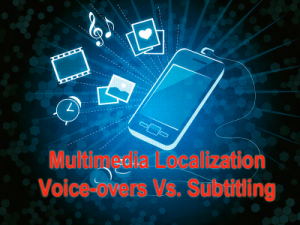What Is Software Localization And Why It’s Essential Software Localization involves adapting software to a country’s language, cultural, and regulatory situation. Visible sections of the software such as the user interface (UI), user experience (UX), and images will be the areas that usually require localization efforts. According to CSA Research, 76% of global consumers prefer … Learn More
Tag: localization

The impact of language errors in clinical trials can be significant, leading to confusion for the participants and researchers. These frustrating events can lead to dropouts, delays in execution timelines, and even affect the validity of the ultimate trial results. Because of this, regulatory agencies now require that global clinical trials are accurate, consistent, and culturally appropriate in each of the local countries they are administered.
Investing in high-quality transcreation services can be a major differentiator for a successful clinical trial, by ensuring regulatory compliance and improved patient outcomes.

Following our exploration of the importance of Cognitive Debriefing in ensuring the cultural and linguistic appropriateness of patient-reported outcome measures, we now turn our focus to the best practices in conducting Cognitive Debriefing sessions. This critical phase in the translation process demands careful planning, execution, and analysis to ensure that the data collected is of … Learn More

Often when organizations look for language services, price drives their decision, and they award translation projects to the lowest bidder. However, price should not be the only consideration when selecting a language service provider. Sometimes, the lowest cost can result in the worst results including: lack of control, delayed turnaround times, linguistic inconsistencies and prolonged … Learn More

Multimedia localization projects can have an immediate impact on helping you reach, inform and communicate with a global audience. Unlike typical translation products, which take time to print and distribute, localized multimedia (especially when used on the web) very rapidly connects your product or service with your multilingual audience in their language. According to Common … Learn More

Last week we gave A Brief Overview of Multimedia Localization, and this week we’re going to dive a little deeper to explore using voice-over versus subtitling for the audio in your multimedia projects. When planning a multimedia localization project, what to do with the audio can be tricky. Should it be localized using voice-over or … Learn More

Perhaps you have sent a translation or localization project to a professional translation company who recommended that in addition to the typical translation, editing and proofing, you add Desktop Publishing (DTP) to your project. You may be wondering, why do I need a language service provider to perform my desktop publishing? Why can’t my design … Learn More

Fuzzy matching is a great way to save both time and money on your translation and localization projects. Fuzzy matching is most useful when you update your translated or localized content on a regular basis. Most of the content you develop is not static, but will undergo regular updates, additions and changes. Updates may be … Learn More

Large, highly technical translation and localization initiatives can be daunting. Especially when they are spread out over multiple projects and involve numerous languages. Languages can be ambiguous. Particularly, given the product-, company- or industry-specific terminology that exists and the multiple meanings a term or phrase may have. How do you manage multiple projects with multiple … Learn More

A word of advice to anyone considering a translation or localization project, be sure to employ and then thank your Project Manager. Having a qualified Project Manager is essential to any translation and localization project. The Project Manager (or PM) does much to facilitate multilingual language projects and can save you a lot of time, … Learn More